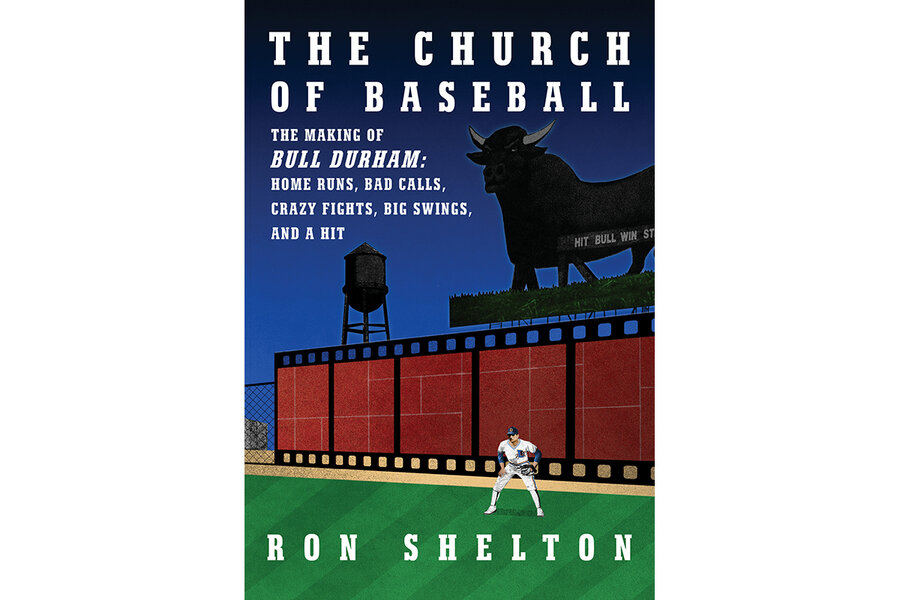How ‘Bull Durham’ went from long shot to movie classic
Loading...
In retrospect, the movie was a long shot. The plot, at first glance, was not particularly promising: a romantic triangle involving two minor league baseball players and a female groupie set in a decaying small Southern town. Add to that a young screenwriter directing his first film with a limited budget and on an exceptionally tight schedule, and it sounds even more problematic.
But just as in baseball, miracles sometimes happen. The movie was “Bull Durham,” and it went on to become one of the most popular movies about sports ever made. In “The Church of Baseball: Home Runs, Bad Calls, Crazy Fights, Big Swings, and a Hit, ” Ron Shelton, who wrote and directed the film, walks us through the process by which the movie was created, filmed, and released.
The movie is told largely from the perspective of Annie Savoy, a free-spirited community college teacher and avid baseball fan who annually picks a young ballplayer with whom to share “a certain amount of life wisdom.” Her attentions practically ensure that the player has "the best year of their career," Annie says.
The players competing for Annie’s favor are “Crash” Davis, a veteran catcher at the end of his career who has joined the team to tutor Ebby Calvin “Nuke” LaLoosh, a bonus baby with a “million dollar arm and a five cent head.” So Annie and Crash have the same goal – to get Nuke ready for the major leagues.
Annie quickly settles into a relationship with Nuke but soon realizes she made the wrong choice. Since she will not keep company with more than one ballplayer a season, the three drift along in an uneasy dance as the season progresses.
Shelton, who was an accomplished minor league ballplayer as a young man, followed the old adage to “write something you know” and constructed a plot that included incidents from his playing days. So unlike most other baseball films, like “Pride of the Yankees,” it is less a glorification of the game and more of a realistic portrayal of what it’s like to toil in the lower rungs of the minor leagues where one prolonged batting slump can – and often does – mean the end of a player’s career.
The movie succeeds because Shelton combines the hopes and struggles of minor league players with the humor and absurdity of men trying to make a living playing a game. One can feel the gritty authenticity of day-to-day life in the minors while at the same time enjoying the story.
The movie also stands out because the three leading actors – while all very young at the time – were immensely talented. Kevin Costner signed on to play Crash Davis immediately and became a strong advocate of making the movie. According to Shelton, actress Susan Sarandon practically begged an audition to play Annie. And a young unknown actor named Tim Robbins was recruited to play the talented but painfully naïve Nuke. The chemistry among the actors was unexpectedly terrific: Robbins and Sarandon began a real-life relationship on the set that would last for 20 years.
Shelton shares plenty of entertaining twists and turns. Early in the shooting, a man appeared on the set who announced himself as Crash Davis who played for the Durham Bulls in the 1940s. It turns out that Shelton had chosen the name of a real player assuming that, after all this time, he must have died. He hadn’t. The real Crash had only one question: “Do I get the girl?” Upon learning that he did – and after being charmed by Sarandon – he was fine with having his name used.
And then there was the time that the rock group Pink Floyd stepped in to help fill the stands for a key scene that was to be filmed on a very cold night. Close study of the scene reveals a lot of the fans are wearing “Another Brick in the Wall” T-shirts. Even Paula Abdul – then a young and unknown choreographer – puts in a brief, and unhappy, appearance.
Shelton goes into great detail about the post-production work, as the movie team and studio executives argue endlessly about which scenes to include and which to cut. He also takes us through the nerve-racking process of test screenings, in which the movie is previewed for carefully chosen audiences. To the dismay of the movie team, the test audiences displayed little of the enthusiasm that the studio executives wanted to see – only 16% of the test audience said they would “definitely recommend” the movie. Eventually, the studio head, Mike Medavoy, chose to ignore the test screening results and scheduled a release.
What could be more American than baseball and movies? The tale of how “Bull Durham” became a classic American sports movie is engaging, informative, and, in its own way, an inspirational story. If you liked the movie, you’ll love the book.








